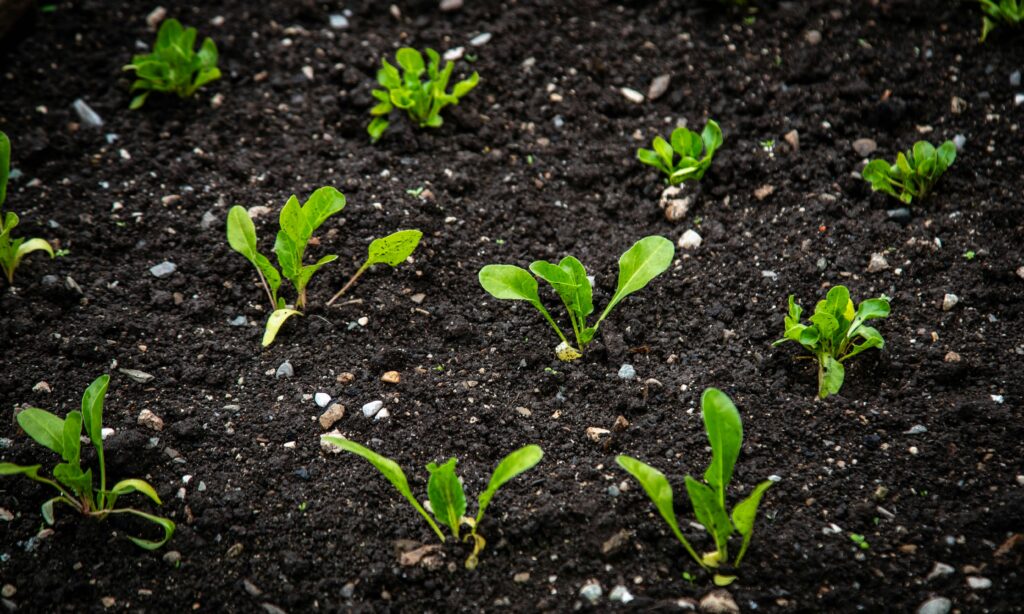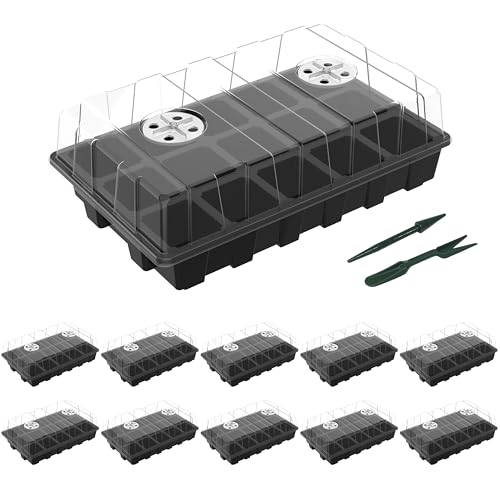Introduction
Ever thought about growing a nutrient-dense, cold-hardy vegetable that thrives when other crops struggle? Brussels sprouts are a powerhouse crop that rewards patient gardeners with abundant harvests of these miniature cabbage-like gems.
Whether you’re a backyard gardener looking to expand your cool-season repertoire or a small-scale farmer seeking a profitable specialty crop, Brussels sprouts offer excellent potential. This complete guide will walk you through everything you need to know about how to plant Brussels sprouts successfully, from site selection to harvest.

What Are Brussels Sprouts and Why Grow Them?
Brussels sprouts (Brassica oleracea var. gemmifera) belong to the same family as broccoli, cabbage, and kale. These distinctive vegetables produce small, round buds along a thick central stalk, resembling miniature cabbages.
Nutritional Powerhouse
Brussels sprouts are loaded with:
- Fiber for digestive health
- Vitamins A, C, and K supporting immunity and bone health
- Minerals including iron, potassium, and folate
- Antioxidants that may reduce inflammation
Market Potential
Fresh, locally grown Brussels sprouts command premium prices at farmers markets, particularly organic varieties. With consumer demand for specialty vegetables growing, Brussels sprouts represent an excellent niche opportunity for small producers.
According to USDA data, Brussels sprouts production remains concentrated in California, creating opportunities for regional growers to serve local markets with ultra-fresh product.
How to Plant Brussels Sprouts: Step-by-Step Growing Guide
Step 1: Understanding Climate and Growing Season Requirements
Brussels sprouts are cool-season crops that actually improve in flavor after light frost. They require:
Temperature Range: 45°F to 75°F (optimal 60°F to 65°F)
Growing Season: 90-180 days from transplant to harvest
Regional Planting Times:
- Northern regions (USDA Zones 3-6): Start seeds indoors in May-June for fall harvest
- Mid-Atlantic/Midwest (Zones 6-7): Plant in July-early August for fall/winter harvest
- Southern regions (Zones 8-10): Plant September-November for winter/spring harvest
- Pacific Northwest/California: August-September for winter harvest
Pro Tip: Brussels sprouts need exposure to temperatures below 50°F to develop their best flavor. Plan your planting so sprouts mature during cool weather.
Step 2: Soil Preparation for Brussels Sprouts Cultivation
Proper soil preparation is crucial for healthy Brussels sprouts development.
Soil Requirements:
- Type: Well-drained loam or sandy loam
- pH Level: 6.0 to 7.5 (slightly acidic to neutral)
- Organic Matter: Rich in compost or aged manure
Preparation Steps:
- Test Your Soil: Conduct a soil test through your local Extension office to check pH and nutrient levels
- Amend pH if Needed: Add lime to raise pH or sulfur to lower it, following soil test recommendations
- Add Organic Matter: Incorporate 2-4 inches of compost or well-rotted manure into the top 6-8 inches of soil
- Fertilize: Apply a balanced fertilizer (10-10-10) or organic alternative at 2-3 pounds per 100 square feet
- Create Raised Beds: If drainage is poor, build raised beds 6-8 inches high
Brussels sprouts are heavy feeders, so generous soil preparation pays dividends.
Step 3: Starting Seeds vs. Transplants
You have two options for how to plant Brussels sprouts:
Starting from Seed Indoors
Timeline: Start 4-6 weeks before transplanting
- Fill seed trays with sterile seed-starting mix
- Plant seeds ¼ inch deep
- Keep soil temperature at 70-80°F for germination (5-10 days)
- Provide 12-14 hours of light daily
- Transplant when seedlings have 4-6 true leaves (typically 4-6 weeks)
Direct Seeding
Less Common Method: Only suitable in areas with long, cool growing seasons
- Plant seeds ½ inch deep
- Space 3-4 inches apart
- Thin to final spacing once seedlings emerge
Using Transplants
Most Reliable Method: Purchase transplants from nurseries or start your own
Transplanting Instructions:
- Harden off seedlings for 7-10 days before planting
- Choose a cloudy day or plant in late afternoon
- Dig holes slightly larger than root balls
- Set plants at same depth they were growing
- Water thoroughly after planting
Spacing Requirements:
- Between plants: 18-24 inches
- Between rows: 30-36 inches
- Planting depth: Same as root ball depth
Dense spacing reduces sprout size; wider spacing produces larger sprouts.
Step 4: Watering Requirements
Consistent moisture is essential for Brussels sprouts success.
Watering Guidelines:
- Frequency: Keep soil consistently moist but not waterlogged
- Amount: 1-1.5 inches per week (including rainfall)
- Method: Drip irrigation or soaker hoses preferred
- Timing: Water in morning to allow foliage to dry
Critical Periods:
- First 2 weeks after transplanting (daily watering may be needed)
- During sprout formation (maintain consistent moisture)
Warning: Inconsistent watering causes split sprouts and loose heads. Use mulch to maintain even soil moisture.
Step 5: Fertilization and Ongoing Care
Brussels sprouts have high nitrogen needs throughout their growing season.
Fertilization Schedule:
At Planting:
- Apply balanced fertilizer or compost
3 Weeks After Transplanting:
- Side-dress with nitrogen-rich fertilizer (blood meal, feather meal, or fish emulsion)
- Apply ¼ cup per plant
Every 3-4 Weeks:
- Continue nitrogen applications until 4 weeks before harvest
- Switch to lower nitrogen in final month to encourage sprout formation
Additional Care Tasks:
Mulching: Apply 2-3 inches of straw or shredded leaves to:
- Conserve moisture
- Suppress weeds
- Regulate soil temperature
Weed Control: Keep beds weed-free, as competition reduces sprout production
Staking: In windy areas, stake plants when they reach 12 inches tall
Leaf Removal: Some growers remove lower leaves as sprouts develop to improve air circulation and direct energy to sprout formation
Step 6: Harvesting Brussels Sprouts
Patience pays off with Brussels sprouts—they’re one of the longest-maturing vegetables.
Harvest Timeline:
- Days to maturity: 90-180 days from transplant (variety dependent)
- Harvest window: 3-4 weeks per plant
How to Tell When Brussels Sprouts Are Ready:
- Sprouts are 1-2 inches in diameter
- Feel firm when squeezed
- Have tight, compact leaves
- Bottom sprouts mature first
Harvesting Technique:
- Bottom-Up Approach: Start with lowest sprouts
- Twist and Pull: Grasp sprout firmly and twist downward to snap it off, or use a sharp knife
- Leave Plant Standing: Continue harvesting upward over several weeks
- Cold Enhancement: After first frost, flavor improves significantly
Topping: Some growers cut off the growing tip 3-4 weeks before harvest to encourage remaining sprouts to size up uniformly.
Storage: Fresh Brussels sprouts keep 3-5 weeks in the refrigerator. They also freeze excellently after blanching.

Advanced Tips for Growing Brussels Sprouts Successfully
Managing Temperature Extremes
In Hot Climates:
- Use shade cloth (30-50% shade) during hot spells
- Plant on the north side of taller crops for afternoon shade
- Consider heat-tolerant varieties like ‘Jade Cross’
In Cold Climates:
- Brussels sprouts tolerate frost down to 20°F
- Use row covers for extended harvest into winter
- Mulch heavily around plants before hard freezes
Crop Rotation Strategy
Never plant Brussels sprouts (or any brassicas) in the same location more than once every 3-4 years.
Rotation Plan:
- Year 1: Brassicas (Brussels sprouts, cabbage, broccoli)
- Year 2: Legumes (beans, peas)
- Year 3: Solanaceae (tomatoes, peppers)
- Year 4: Root vegetables (carrots, beets)
This rotation prevents soil-borne disease buildup and manages nutrient depletion.
Companion Planting
Good Companions:
- Onions and garlic (repel pests)
- Beets and carrots (efficient space use)
- Herbs: dill, mint, rosemary (attract beneficial insects)
Poor Companions:
- Strawberries (compete for nutrients)
- Tomatoes (different water needs)
- Other brassicas (same pest problems)
Best Brussels Sprouts Varieties for American Gardens
For Cold Climates
Long Island Improved: Heirloom variety, very cold-hardy, 90-100 days
Catskill: Excellent for northern gardens, reliable producer, 90-110 days
Churchill: Hybrid, uniform sprouts, good cold tolerance, 90 days
For Moderate Climates
Jade Cross E: Popular hybrid, heat-tolerant, disease-resistant, 90-95 days
Diablo: High yields, good for fall harvest, 110 days
Gustus: Sweet flavor, reliable production, 125 days
For Mild Winter Areas
Red Ball: Colorful variety, anthocyanin-rich, 120 days
Nautic: Heat-tolerant hybrid, uniform sprouts, 105 days
Frequently Asked Questions
Q: Can I grow Brussels sprouts in containers?
A: Yes! Use containers at least 12-15 inches deep and 12 inches wide. Ensure excellent drainage and stake plants as they grow tall.
Q: Why are my Brussels sprouts loose and not forming tight heads?
A: Usually caused by high temperatures during development. Brussels sprouts need cool weather (below 70°F) for proper sprout formation.
Q: Do I need to remove the leaves?
A: Not necessary, but removing lower leaves as sprouts develop can improve air circulation and make harvesting easier.
Q: How do I make Brussels sprouts taste less bitter?
A: Harvest after frost—cold temperatures convert starches to sugars. Also, smaller sprouts tend to be sweeter.
Q: Can I save seeds from my Brussels sprouts?
A: Yes, but they’re biennial, requiring a second year to flower and produce seeds. They also cross-pollinate with other brassicas.
From Garden to Table: Enjoying Your Harvest
Fresh Brussels sprouts from your garden taste remarkably different from store-bought—sweeter, nuttier, and more tender.
Storage Tips:
- Refrigerate unwashed sprouts in perforated bags
- Keep up to 5 weeks in crisper drawer
- Blanch and freeze for long-term storage (up to 12 months)
Popular Preparation Methods:
- Roasted with olive oil and sea salt
- Shredded raw in slaws
- Sautéed with bacon or pancetta
- Blanched and grilled
Related Reading
How to Grow Broccoli: Complete Field and Garden Guide
Cool-Season Vegetable Gardening: A Complete Calendar
Organic Pest Control for Brassica Crops
Conclusion: Is Growing Brussels Sprouts Worth It?
Absolutely! While Brussels sprouts require patience and proper timing, they reward growers with:
✅ Premium market value for fresh, local produce
✅ Excellent nutritional content for health-conscious consumers
✅ Extended harvest period providing income over several weeks
✅ Cold-hardy nature filling the gap when other vegetables struggle
✅ Low pest pressure compared to many vegetables (with proper management)
Whether you’re gardening for your family’s table or growing for market, Brussels sprouts offer a satisfying challenge and delicious results. With the proper site selection, consistent care, and patience through the long growing season, you’ll discover why these mini-cabbages have earned such devoted fans.




